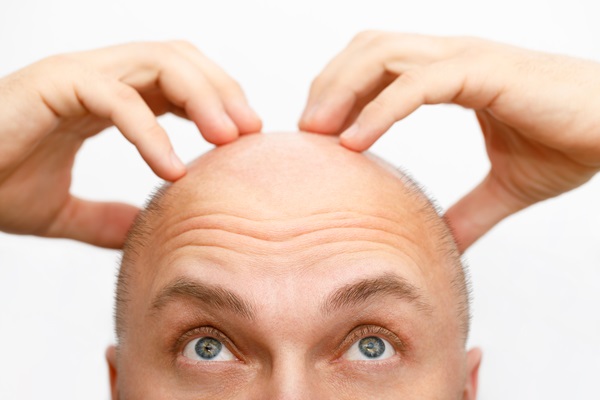Hair Graft Treatment FAQs

Considering a hair graft procedure? Read on to learn more about this treatment. Consulting with a hair doctor is a good idea, and will provide the opportunity to address any concerns about the treatment. Understanding the treatment can help you prepare for it and recover properly.
Common questions about hair graft treatment
If you want to know more about your upcoming hair graft treatment, here are the answers to some commonly asked questions about the procedure:
What happens during a hair graft treatment?
The hair doctor will take a small section of healthy scalp from the sides and back of the head. The doctor will close up the donor areas. This will result in a fine incision scar. The remaining hair will cover this thin scar.
The treatment team will divide the strip of the healthy scalp for replacement in balding sections. The hair graft may consist of different sizes of healthy scalp portions. Its division will depend on the patient’s scalp conditions and specific needs. The grafted hairs grow like normal hair. It will remain undetectable as it merges into the recipient’s scalp.
IV sedation and local anesthesia can remove the pain and discomfort from the hair graft treatment. The hair doctor and treatment staff will check the newly grafted hairs. These new follicles will grow in different directions. A hairline will form, and the patient’s hair density will increase.
Who can receive a hair graft treatment?
Talking to a hair doctor during a consultation can confirm if the patient is a good candidate for this hair treatment. It is good to know that sex or age is not a hindrance to methods of restoring hair. Research shows that even patients who are 70 years old have been successful in getting thicker hair. People at least 30 years old can also experience successful hair graft treatments.
People younger than 30 years old can also be good candidates, but the hair doctor must be careful in managing the treatment. An ideal candidate for a hair graft treatment is a person with healthy hair follicles at the back and the sides of the head. It is ideal to still have hair during the treatment. This can help hide the early parts of the hair restoration. The following may qualify for a hair transplant:
- Those who had cosmetic surgery
- Those whose scarring caused hair loss
- Those with female or male pattern baldness
- Those who have had scalp injuries
- Those who had hair graft procedures before
- Those who want to thicken facial hairs
What can I expect after the treatment?
The patient may experience soreness. The hair doctor will prescribe rest and pain medication after the treatment. Anti-inflammatory medications can help reduce the swelling. Antibiotics will help lower the patient’s risk of developing infections.
Many hair graft patients return to normal activities one to two days after treatment. The grafted hair will fall out two to three weeks after. This is normal. It will pave the way for new hair to grow. New hair will grow about eight to 12 months after the grafting.
The hair doctor may prescribe medications that can help prevent possible hair loss. Washing the hair the morning after every grafting procedure is ideal. The patient must avoid strenuous physical activity for five to seven days. Scabs and crusting may happen for seven to 10 days, along with some itchiness. Numbness in the donor or recipient areas should disappear in several weeks to three months.
About five to six months after the hair graft treatment, the transplanted hairs start to look natural. These new follicles will keep growing. The donor area will heal and disappear. Any complications will typically be minimal.
What are the long-term possibilities after the hair graft treatment?
Hair transplant cases are often successful. It may take up to about nine months before the new hairs develop strong roots. New hairs also begin to grow after some fall out. Any scarring will be permanent but will fade later on. It may take at least a year for these scars to fade. The hair doctor may recommend a touch-up surgery to enhance the transplant.
Ready to get your hair back?
It may seem extreme to consider a hair transplant procedure to regain your locks. But this may be the procedure you need to have thicker hair. The process may take some time, but with the right aftercare, the effort will be worth it. Working with your hair doctor can make your hair graft experience easier and more pleasant.
Get more information about Dillon Hair Restoration in Schaumburg at http://dillonhair.com.
Check out what others are saying about our services on Yelp: Hair Graft in Schaumburg, IL.
Recent Posts
Hair loss can usher in mixed emotions and damper your self-esteem, whether or not you were expecting the day. Fortunately, hair plugs or grafts can provide patients with a full head of their natural hair. If thinning or balding is something you are experiencing right now, help is available at our Schaumburg office. First, review…
Hair thinning treatments are far more versatile than they get credit for. Our team works closely with each patient to determine the root cause of their thinning tresses and craft an effective treatment plan. Take a closer look at common causes of hair thinning and the various methods we can use to treat it.Many factors…
Hair loss can significantly impact people, affecting their self-confidence and interpersonal relationships. Fortunately, hair grafting, also known as hair transplantation, provides a viable option to restore the natural hairline. If you are still deciding whether to pursue a hair graft, here are three reasons to consider it.Unlike temporary solutions like wigs or hairpieces, a hair…
For those with wrinkled skin, Botox® injections can provide great relief. While it may be a natural sign of aging, the presence of wrinkles can be frustrating to some. Thanks to the scientific research and testing in the 1990s by several dermatologists, Botox® was approved in 2002 by the Food and Drug Administration for cosmetic…


